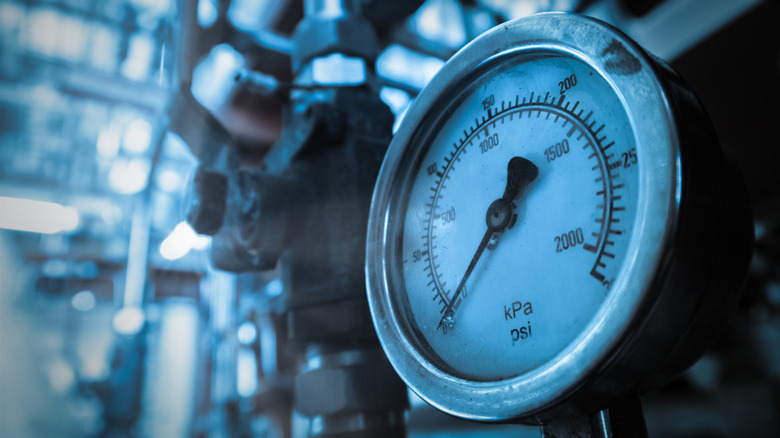How To Convert ATM To Moles Of Gas
An atm, or atmosphere, is a unit of gas pressure. One atm is the atmospheric pressure at sea level, which, in other units, is 14.7 pounds per square inch, 101,325 Pascals, 1.01325 bars, or 1,013.25 millibars. The Ideal Gas Law allows you to relate the pressure of a gas inside a container to the number of moles of gas, provided you keep the temperature and volume constant. According to the Ideal Gas Law, 1 mole of a gas that occupies a volume of 22.4 liters at 273 degrees Kelvin (0 degrees Celsius or 32 degrees Fahrenheit) exerts a pressure equal to 1 atm. These conditions are known as standard temperature and pressure (STP).
The Ideal Gas Law
The Ideal Gas Law relates gas pressure (P) and volume (V) to the number of moles of gas (n) and the temperature (T) of the gas in degrees Kelvin. In mathematical form, this relationship is: PV = nRT.
R is a constant known as the ideal gas constant. When you measure the pressure in atmospheres, the value of R is 0.082057 L atm mol-1K-1 or 8.3145 m3 Pa mol-1K-1 (where L stands for liters).
This relationship is technically valid only for an ideal gas, which is one that has perfectly elastic particles with no spacial extension. No real gas fulfills these conditions, but at STP, most gases come close enough to make the relationship applicable.
Relating pressure to moles of gas
You can rearrange to the ideal gas equation to isolate either pressure or number of moles on one side of the equals sign. It becomes either P = nRT/V or n = PV/RT.
If you hold the temperature and volume constant, both equations give you a direct proportionality: P = Cn and n = P/C, where C = RT/V.
To calculate C, you can measure volume in either liters or cubic meters as long as you remember to use the value of R that is compatible with your choice. When using the Ideal Gas Law, always express temperature in degrees Kelvin. Convert from degrees Celsius by adding 273.15. To convert to Kelvin from Fahrenheit, subtract 32 from the Fahrenheit temperature, multiply by 5/9, and add 273.15.
Example
The pressure of argon gas inside a 0.5 liter bulb is 3.2 atm when the bulb is off and the room temperature is 25 degrees Celsius. How many moles of argon are in bulb?*
Start by calculating the constant C, where R = 0.082 L atm mol-1K-1. Keep in mind that 25 degrees Celsius = 298.15 K. C = RT/V = (0.082 x 298.15)/0.5 = 48.9 atm mol-1.
Plug that value into the equation for n, and the number of moles of gas is: n = P/C = 3.2/48.9 = 0.065 moles.
